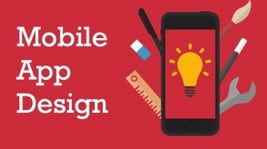Swipe Conference began last year as an idea conceived by the three organisers of the monthly CocoaHeads meetups in Melbourne, Sydney and Canberra—to bring together designers and developers of iOS and Mac apps for several days of inspiration and education.
Despite the conference having a very strong development focus (the organisers are all iOS developers), the topics of mobile design and user experience got some significant coverage in many of the sessions. Overall it was a fantastic conference with some dynamic, enthusiastic (and at times hilarious) speakers.
You might have seen my sketchnotes from the conference that I published last week. To complement them, here is a list of things that I learned, or was reminded of, while at the conference.
1. Hybrid apps are the Way of the Future.
This was a theme that ran through a few of the sessions. Martin Fowler and Stewart Gleadow from Thoughtworks espoused the virtues of building as much functionality as is reasonable in a reusable API, so that other apps and online services can benefit. Likewise, the Deloitte Digital team presented a case study of the new Australia Post iPhone app, for which APIs were created at the backend and are being reused in other apps and web services offered by Australia Post.
2. The Post-mobile World is Gonna be Exciting
Josh Clark delivered what was the standout presentation for me—a highly polished, entertaining and inspiring glimpse into the future of a world where user interaction exists not on the glass screen of a mobile device, but on the tables, walls and furniture surrounding it. Weaving in natural gestures, enormous glass touch screens, augmented reality, Lego characters and aliens, Josh’s talk was a perfect example of a presenter knowing his audience and incorporating topics that resonate—he’s speaking at Web Directions South 2012 in Sydney next month. I can’t wait to see him on stage again!
3. It Is Possible to Wrestle Photoshop into Submission
Every now and then, usually after pulling my hair out in frustration from pushing pixels in Adobe Photoshop, I have a moment where I evaluate my workflow and ponder whether there is a more efficient way to work, or a better tool for the task of crafting digital interfaces. At times, Photoshop feels like a bloated, awkward sledgehammer that I’m using to tap in a thumb tack.
Marc Edwards and Matt Kelsh feel my pain. Thankfully, they’ve paved the way for the rest of us, and detailed the Photoshop Actions, shortcuts and productivity hacks in their presentations. Enlightening information for someone who only dips his toes into Photoshop occasionally such as myself.
4. Little Details can Make a UI Delightful
Much of the content in the Deloitte Digital team’s presentation covered the subtle transitions, interactions and animations that have been placed in the Australia Post mobile app to delight the user. The team put considered thought into when individual items should display on various screens, how best to mimic the laws of gravity when animating UI elements, and how to animate controls in a subtle way so that they’re pleasing to the eye but don’t distract the user or grow tired after the 20th time the user views them.
5. It’s OK to Hack Something
Troy Brant, the lead developer at Flipboard, gave a terrific snapshot of how his team operates, how they maintain forward momentum while not getting bogged down by investing in absolutely perfect code. One of the keys to Flipboard’s success was their pragmatic approach to hacking code. This is summed up by the mantra:
“Bad code is full of hacks; Good code has no hacks; Great code has hacks where required”.
As a UX designer, you may not find yourself writing a lot of code. However there are occasions when it may be necessary to get your hands dirty, when whipping up an HTML prototype or experimenting with an animation effect in jQuery. Likewise, if you’re involved in a discussion with developers who are prototyping interactions for you, it’s useful to understand the trade-offs that developers are forced to make when juggling a deadline with writing maintainable code.
6. If in Doubt, Leave it Out
It’s easy to forget that the first iPhone had very few features. Troy reminded us of this when advocating the necessity to launch your product sooner rather than later, in order to get real customers using it and giving you their feedback. If there’s a feature that you’re uncertain about whether to include in a release or not, remember these words from Automattic founder, Matt Mullenwegg, who once wrote that usage is like oxygen for ideas:
“every moment you’re working on something without it being in the public it’s actually dying, deprived of the oxygen of the real world.”
You can always add it in version 1.1.
7. It’s Important to be Flexible in the Early Stages of your Product
None of the great tech companies in technology do what they set out to do.
Bill Tai, a venture capitalist from Silicon Valley and investor in products such as TweetDeck and Scribd, spoke of the many pivots that startups often take before finding their straps.
While VCs are often more concerned with some of the more measurable statistics that fall outside the realm of user experience, it’s fair to say that this particular philosophy is transferable—if your product is not gaining traction, one of your fundamental assumptions about what your users want, need, or are prepared to pay for may be flawed. Getting to know your users means understanding how to validate those assumptions.
8. There’s no Excuse for not Building Accessibility into your App
Jake MacMullin gave a terrific tour of both the built-in accessibility features of iOS as well as some of the tips and techniques for those looking to go the extra mile and make their app easy to use for people who are partially or completely visually impaired, or perhaps have difficulties with some of the standard touch gestures that able-bodied folks like myself take for granted. The gist of Jake’s presentation is this: accessibility is actually not all that hard—you just have to remember to test for this kind of thing. Really, there’s no excuse not to.
9. Onboarding is Crucial
Being forced to step through how to use an app is much less frustrating than not knowing how to use it.
Onboarding refers to the process of taking a user on a tour of your website or app to get them using it and past the initial “Where do I start?” hump. It’s much less frustrating to be forced to step through an app once than not knowing how to use it. Ben Hamey makes a point of forcing new users to step through the basics of how to use each of the apps he designs. He does get the occasional complaint from users who find this mildly patronising—but this is balanced by the thousands of users who appreciate the hand-holding.
10. The Most Successful (Children’s) Apps are Single-Purpose
The ABC innovation team, which includes presenters Meenah Tharmarajah and Amy Nelson, hit upon this realisation when conducting a competitor analysis early on in the project that would become the Play School Art Maker app for iPad. However, the fact that they were designing an app for children as young as 18 months is kind of irrelevant: remove the word “children’s” from this point, and the statement holds true. The apps I use most on my phone do one thing, and one thing well.
Did you make it to Swipe Conference this year? If so, what learnings stuck with you? Tell me about them in the comments!





